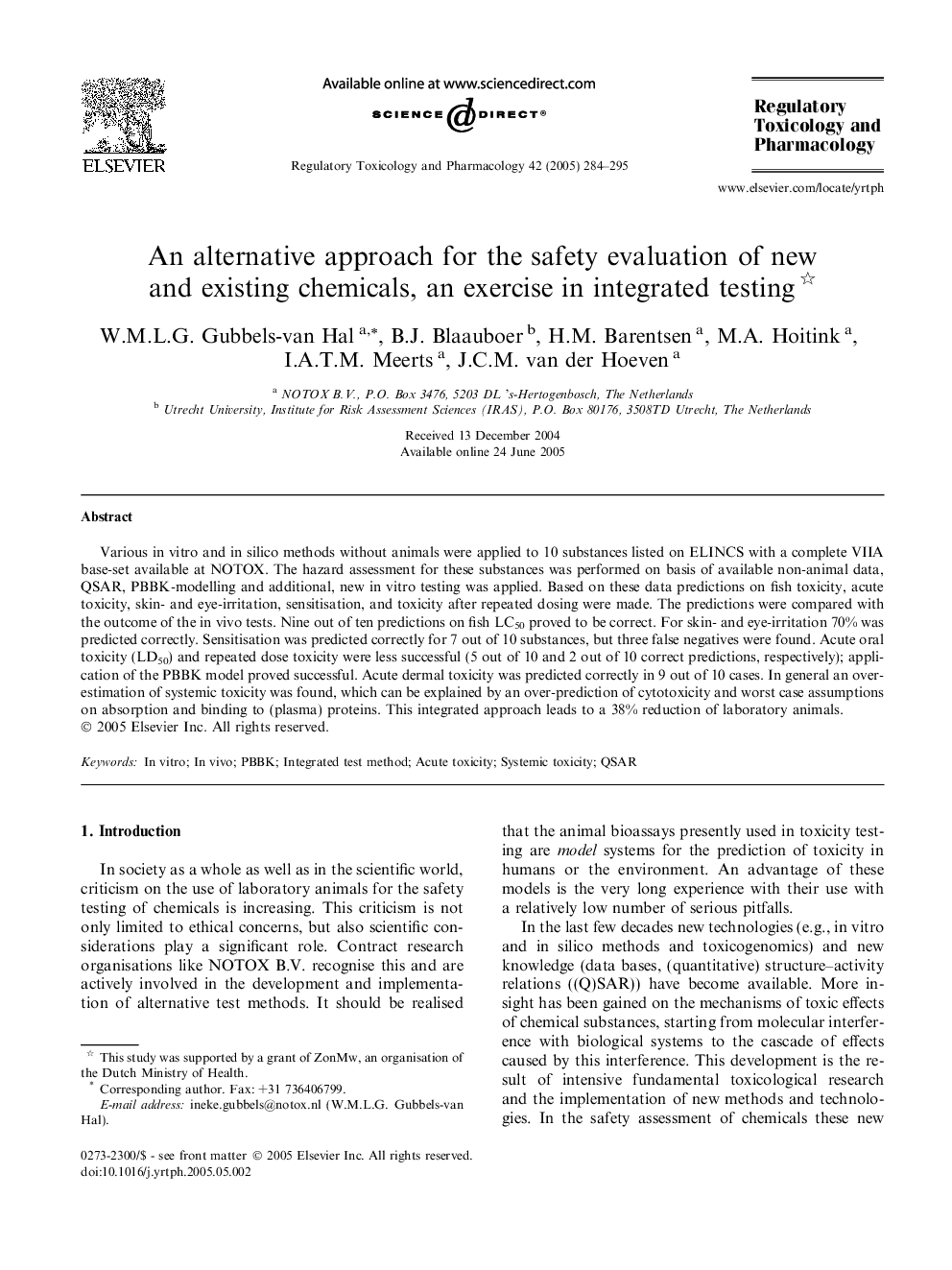| Article ID | Journal | Published Year | Pages | File Type |
|---|---|---|---|---|
| 9033491 | Regulatory Toxicology and Pharmacology | 2005 | 12 Pages |
Abstract
Various in vitro and in silico methods without animals were applied to 10 substances listed on ELINCS with a complete VIIA base-set available at NOTOX. The hazard assessment for these substances was performed on basis of available non-animal data, QSAR, PBBK-modelling and additional, new in vitro testing was applied. Based on these data predictions on fish toxicity, acute toxicity, skin- and eye-irritation, sensitisation, and toxicity after repeated dosing were made. The predictions were compared with the outcome of the in vivo tests. Nine out of ten predictions on fish LC50 proved to be correct. For skin- and eye-irritation 70% was predicted correctly. Sensitisation was predicted correctly for 7 out of 10 substances, but three false negatives were found. Acute oral toxicity (LD50) and repeated dose toxicity were less successful (5 out of 10 and 2 out of 10 correct predictions, respectively); application of the PBBK model proved successful. Acute dermal toxicity was predicted correctly in 9 out of 10 cases. In general an over-estimation of systemic toxicity was found, which can be explained by an over-prediction of cytotoxicity and worst case assumptions on absorption and binding to (plasma) proteins. This integrated approach leads to a 38% reduction of laboratory animals.
Related Topics
Life Sciences
Environmental Science
Health, Toxicology and Mutagenesis
Authors
W.M.L.G. Gubbels-van Hal, B.J. Blaauboer, H.M. Barentsen, M.A. Hoitink, I.A.T.M. Meerts, J.C.M. van der Hoeven,
